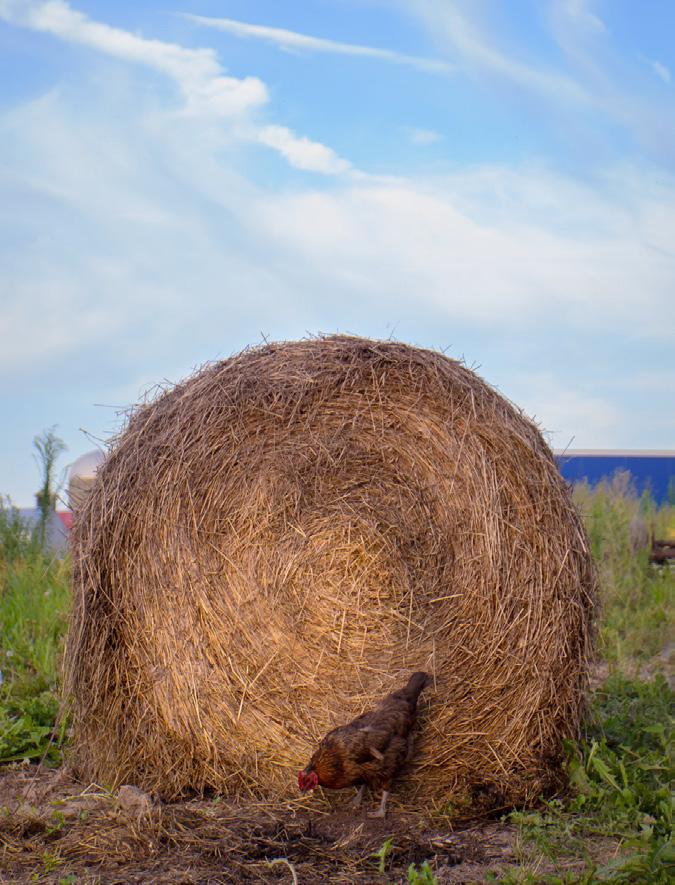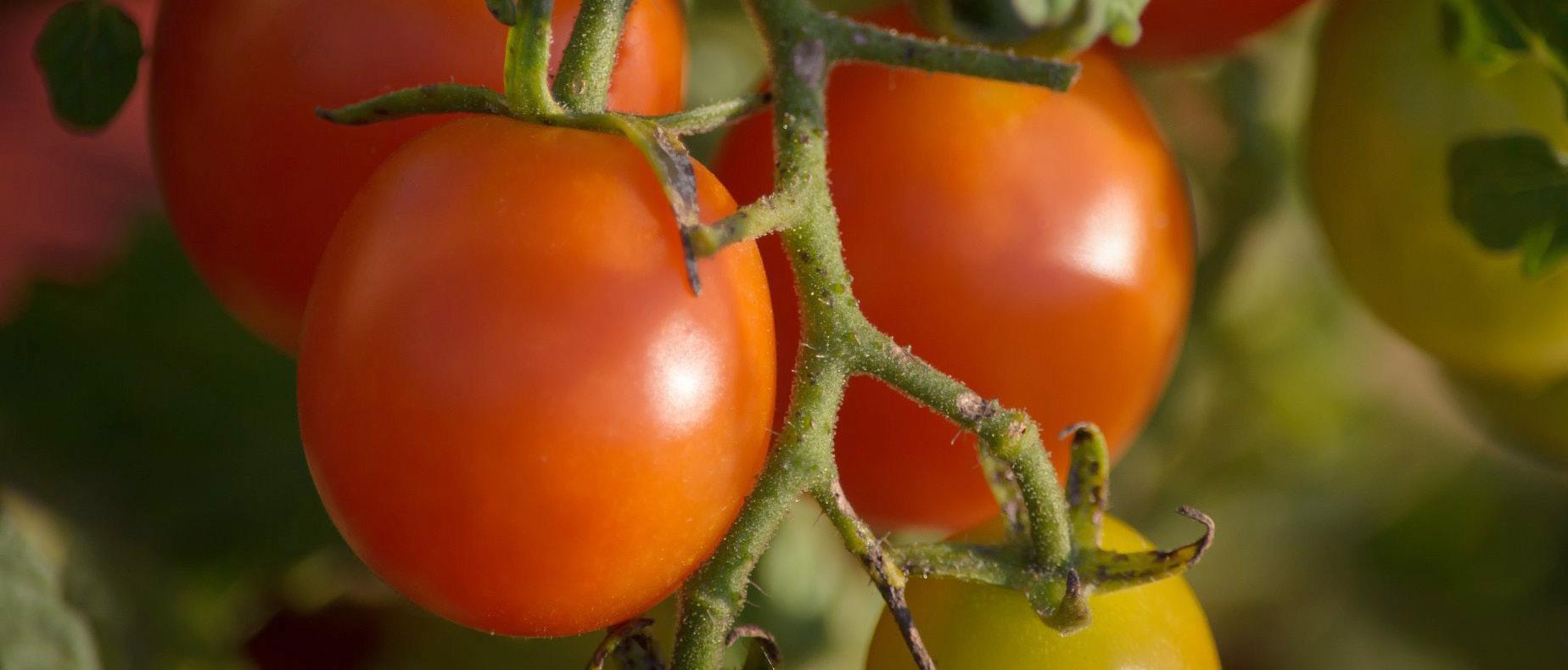
5 minute read
Roots in the Ground
We like to think we know how to listen. How to agree, disagree, laugh, help, and empathize. But not every voice is speaking so directly. Our worlds are filled with voices, but so many perpetually screaming go ignored because we don’t know how to hear them. If the squeaky wheel gets the grease, what of the silenced ecosystem once home to humming bumblebees, seeting chickadees, and chattering wood ducks?
When Julie Wolfgram chose to follow in the footsteps of her parents and grandparents and become a farmer at her son’s farm, it didn’t take long for her to understand just how much the land was trying to say. “The soil here is not really great soil,” says Julie of her son’s 83 acres. “The first several years felt like a real disaster.”
Advertisement
In the beginning, rainy days were some of the worst. “Our soil is very tightly condensed. It’s a clay-based soil, so it’s actually smaller particles. And it’s like brick. The water takes a very long time to penetrate. ... If it rained one day, I wouldn’t be able to even walk on the property for three days because of the clay mud.”
Living like this wasn’t just an inconvenience for Julie, it was a cry for help from her land. When she first started, there was nothing on her field. No buildings. No power. But her son would build a well and pumphouse and get electricity out there with the brief time he had between Army assignments. She would breathe life back into what had become something of a wasteland.
“Now, we’ve been mowing and putting all this organic matter back into the soil,” says Julie. She takes wood chips from tree trimmers and other people’s leaves to put some skin on the bones— organic matter on the compacted soil. “That took about four years. They say you can measure the amount of soil your property has lost by looking at an established fence row. ... We’re looking at about a foot of soil that’s been washed away over the last several decades in the modern farming technique.
“This is how we got the Dust Bowl. We’re headed in the same direction. They don’t leave enough organic matter on their land. No farmer around here does what’s called green manure. After you take corn off, you plant oats or you plant rye—some sort of grass or wheat. You don’t grow it to get the kernels. You do it to get the green mass. And then it freezes, and it dies in the fall. You go back in the spring and plant your next crop right in that debris. So it holds the soil, but it also gives organic matter to the soil. Nobody does that here.”
Aside from a wide range of produce, Julie also utilizes the pastureland of her son’s farm for her chickens and hogs to roam around in and do what they do. Concerning her pigs, “They actually
Julie Wolfgram Roots in the GroundRoots by Kyle Jacobson

are grazing animals. They love to be in the wood to forage for nuts. They dig up roots. They kind of keep the woods clean of all kinds of stuff that would promote forest fires. They’re good for that.”
Julie sees her farming as potential for this rich, biodiverse field that bears highquality produce and gives her animals a stress-free life before being butchered. As a result, more of the native wildlife also has a place to call home. Then she takes everything she knows and has learned about connection with the land and translates it to her work with the community.
Listening again becomes central when Julie looks for ways she can improve the lives of others today, not tomorrow. She went to a HUD development to figure out what those residents needed. Not what they stereotypically need, but what this specific group of individuals would benefit from.
“We talked about what isn’t that affordable. What kinds of things do you eat? What are your issues? A lot of them don’t cook very much because it’s hard to stand for that long. They like microwaves. Mostly it’s just one person in an apartment. ... We came to a starting point. I’ll bring eggs, and you guys buy the eggs for a dollar a dozen. I’ll bring vegetables, and I’ll lay them out on the table and put an envelope at the end. You know your budget, and you pay accordingly in the envelope. If you need to make change, then you take the change out of the envelope. Nobody’s going to be standing over your shoulder. That’s how we operated, and it was pretty successful.”
She’s looking to branch out to the community center this summer, and wants to start taking on food deserts when the soil improves further and produces a more consistent crop yield. Though the farm has yet to turn a profit, Julie is able to operate because of people who buy her eggs and other items at full price: $3.50 a dozen for some of the healthiest eggs in the Madison area.
On future improvements, Julie looks forward to having her son around. “He deployed to Afghanistan; he’s actually been gone three years, and we’ve been here four. He should be around for the whole summer this year unless he gets called.” This year, Julie is hoping to sell starter plants in addition to what she already supplies, so having her son around will be important; she’s otherwise taking on the 83 acres alone.
Maybe it’s because Julie went to college to be a teacher that she came to understand the importance of listening. Certainly being the oldest daughter of four children taught her the luxury of being heard, and maintaining a twoacre garden from the age of 11 helped her understand the language of the land. She also remembers how nobody outside of her family was supportive of her when she could’ve really used the help raising her five children as a single parent. She wasn’t going to allow herself to be that person. Julie told me when it comes to helping others, it’s important to remember “it’s not the same for everyone. It’s just really important to me to not be like everyone else who walks through the door and slaps a sticker on saying ‘I Voted’. ... It’s important to me to make people feel like they’ve been heard and they’ve been helped. ... If you don’t know what to do, do what you know and get started.”


Kyle Jacobson is lead writer and senior copy editor for Madison Essentials.
Photographs by MOD Media.


Photograph by Barbara Wilson










